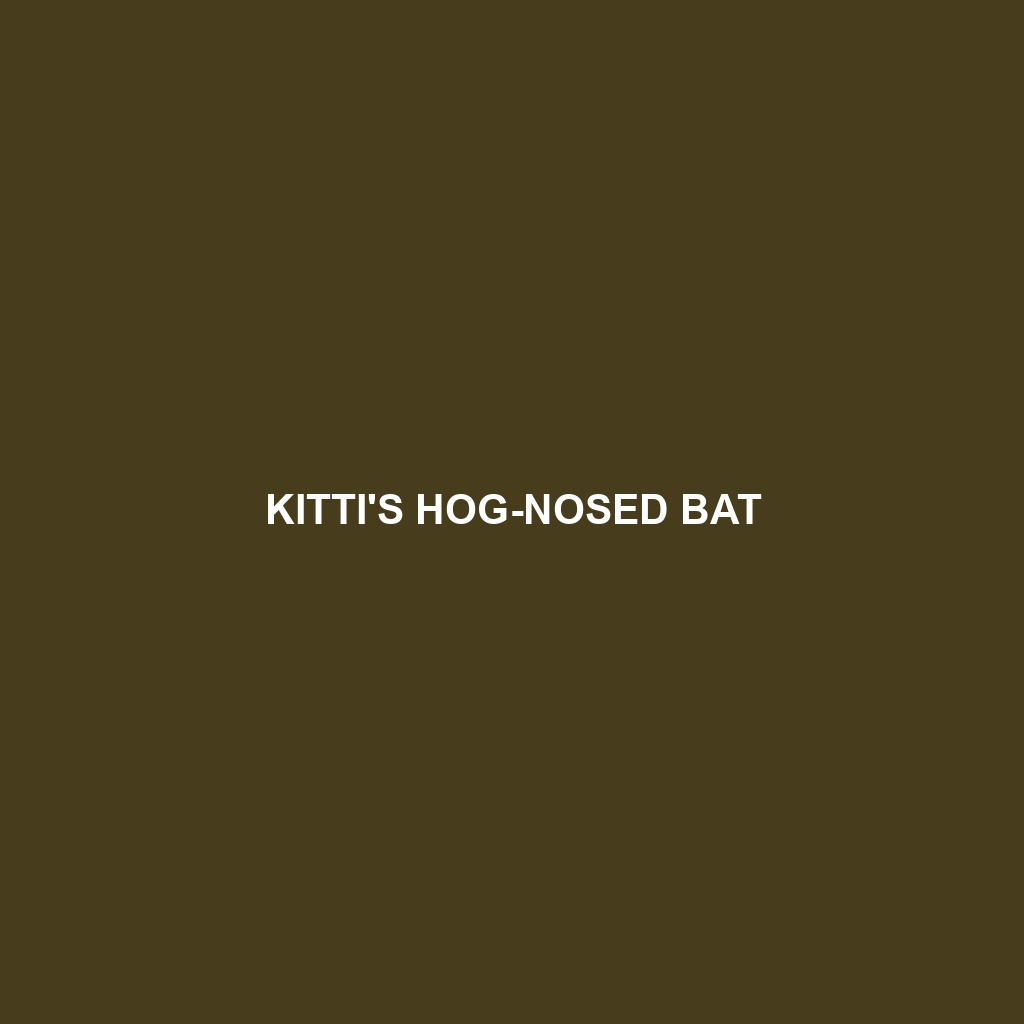Kitti’s Hog-nosed Bat
Common Name: Kitti’s Hog-nosed Bat
Scientific Name: Craseonycteris thonglongyai
Habitat
Kitti’s Hog-nosed Bat, also known as the bumblebee bat, is primarily found in parts of Southeast Asia, specifically in Thailand and Myanmar. This species thrives in limestone caves and adjacent forests, requiring humid and tropical environments to sustain its life cycle. The bat often roosts in small colonies within caves, providing it with the protection and climate it needs.
Physical Characteristics
The Kitti’s Hog-nosed Bat is renowned for its minuscule size; it measures approximately 3 cm (1.1 in) in body length and weighs around 2 grams, making it one of the smallest bats in the world. Its fur is dense and typically has a dark brown color, with a notable snout that resembles a pig’s nose, which distinguishes it from other bat species. Its wings are also uniquely shaped, allowing for agile flight in dense vegetation.
Behavior
This species exhibits nocturnal behavior, being most active during the night when it forages for food. Kitti’s Hog-nosed Bat is known for its interesting social structure, often roosting in small groups. During flight, these bats display rapid movements, which helps them evade predators while hunting. Their echolocation capabilities are highly developed, allowing them to navigate in complete darkness effectively.
Diet
Kitti’s Hog-nosed Bat feeds primarily on small insects, particularly midge and mosquito species. This diet helps control insect populations in their habitat, highlighting their role as natural pest regulators. Due to their tiny size, they are adept at catching food in flight, utilizing their echolocation to locate prey effectively.
Reproduction
The reproductive cycle of Kitti’s Hog-nosed Bat typically occurs during the warm season, with females giving birth to a single offspring after a gestation period of about 2 months. The young bat is dependent on its mother for food and care, gradually developing its foraging skills as it matures. Breeding typically occurs once a year, contributing to the population’s slow growth rate.
Conservation Status
Kitti’s Hog-nosed Bat is currently classified as endangered by the International Union for Conservation of Nature (IUCN). The primary threats to their survival include habitat loss due to deforestation and human encroachment, making conservation efforts critical for the species’ continued existence.
Interesting Facts
– Kitti’s Hog-nosed Bat holds the title for the world’s smallest mammal in terms of weight.
– Due to its small size and rarity, this species is often a target of research and conservation studies, emphasizing the importance of preserving its habitat.
Role in Ecosystem
Kitti’s Hog-nosed Bat plays a vital role in its ecosystem by controlling insect populations through its predation on small insects. This bat contributes to the biodiversity of its habitat, supporting the health of the ecosystem in which it lives by ensuring that insect populations remain in check, which is crucial for maintaining the balance within its environment.
